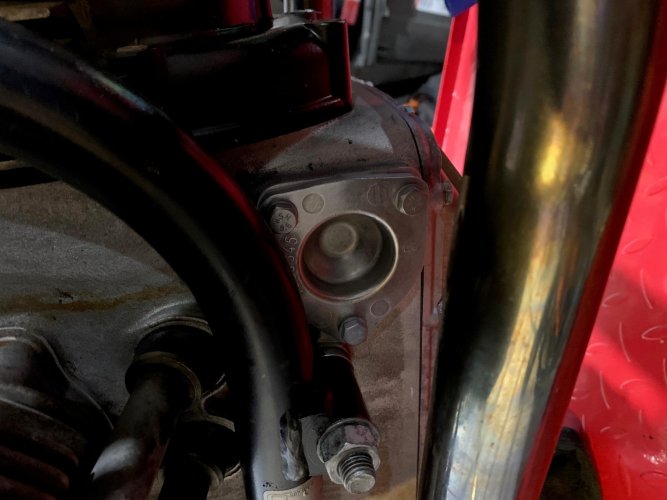georgebarthel
New member
Hello to the community,
Relatively new member here. I have embarked down the dark path of rescuing an '82 R100RT. The original body work was in relatively rough shape, so as I rebuild the bike I am going to do so without the OEM fairings. Naturally I am attempting to streamline things as much possible, and would like to delete the oil cooler assembly.
I've gone as far as sourcing all the related items from the EV, most importantly these items that differ from the oil cooler version specs.
Oil Filter Cover: 11421263345
Pipe(short): 11111263342
What I am seeking via this post is whether or not this is a terrible idea, or detrimental to the engine. I have seen some content out there that makes this seem like a no brainer. But I've also seen some threads that caution doing this.
Would anyone possibly be willing to share any related experience or intel here? A great many thanks in advance. -G
Relatively new member here. I have embarked down the dark path of rescuing an '82 R100RT. The original body work was in relatively rough shape, so as I rebuild the bike I am going to do so without the OEM fairings. Naturally I am attempting to streamline things as much possible, and would like to delete the oil cooler assembly.
I've gone as far as sourcing all the related items from the EV, most importantly these items that differ from the oil cooler version specs.
Oil Filter Cover: 11421263345
Pipe(short): 11111263342
What I am seeking via this post is whether or not this is a terrible idea, or detrimental to the engine. I have seen some content out there that makes this seem like a no brainer. But I've also seen some threads that caution doing this.
Would anyone possibly be willing to share any related experience or intel here? A great many thanks in advance. -G


